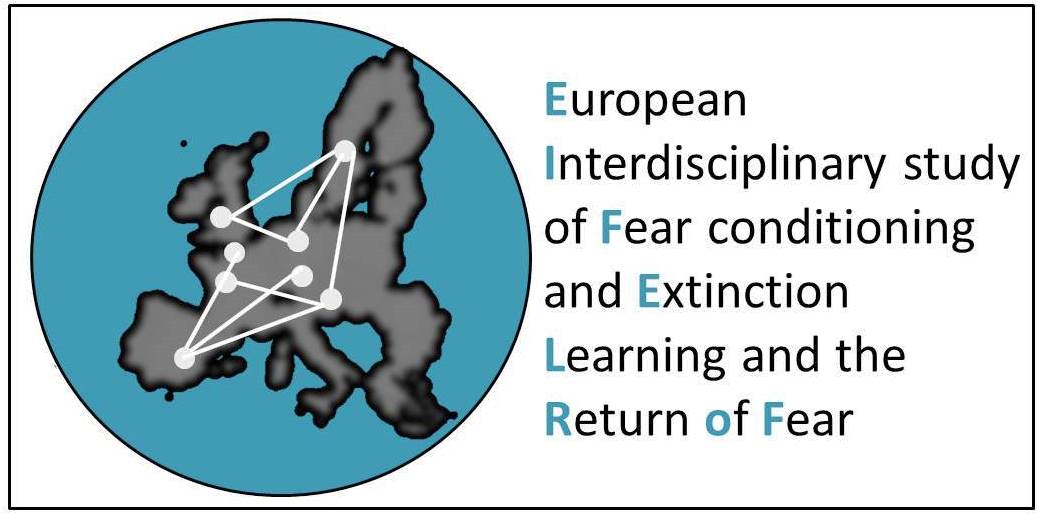Projects
Get a glimpse into the work we do: from ongoing investigations to completed projects.
Current Projects

The FEAR PROFILES projects suggests a paradigm shift in fear and anxiety research by focusing on individual differences—often overlooked as residual variance—as key to advancing mechanistic understanding. We use systematic, multi-method studies combining established experimental paradigms with a wide array of methods (fMRI, psychophysiology, VR, freezing platform) designed specifically to detect and analyze individual differences. This approach aims to identify distinct subgroups (“fear profiles”) and trajectories based on behavioral, neurobiological, and physiological responses, which are then further characterized through deep and digital phenotyping. Ultimately, our work aims to refine models of fear and anxiety, improve research methods on individual variability, and pave the way for targeted, mechanism-based interventions to better address anxiety disorders.

This project investigates how early adversity—an important risk factor for a range of mental health disorders—affects fear learning, generalization and return of fear processes. While patients with anxiety disorders typically show heightened responses to safety cues, previous work suggests that individuals exposed to early adversity may instead be characterized by blunted responses to danger cues, leading to reduced discrimination between safety and threat (for a review see Ruge et al., 2024). In a large cohort (N=180), we combined psychophysiological (SCR, startle), neuroimaging (fMRI) while considering mental health diagnoses and the global assessment of functioning. Preliminary results confirm reduced fear discrimination driven by diminished CS+ responses in individuals exposed to early adversity, with no significant effect of lifetime mental health diagnoses was observed. In addition, we employed item-based content analyses exploring the item and hence content overlap across a wide range of questionnaires used to assess exposure to early adversity (Koppold, Ruge, Hecker & Lonsdorf, 2024).

It is our vision to facilitate cumulative science in the field of human fear conditioning research by gathering datasets and hence generating new information while at the same time ensure sustainability of research investments.To achieve this aim, we are developing a cooperative, sustainable, living and dynamically growing database with living analyses and building up a community consortium. The database will initially be based on ‘open data’ and will be enriched with new data sets in the long term. To this end, we develop a data curation and metadata tool that will allow researchers to contribute datasets with minimal effort. The infrastructural tools are developed in collaboration with the Leibniz Institute for Psychology (ZPID, Trier) and are currently in a beta-testing phase. We expect community involvement to start by late summer 2025. First analyses will cover temporal dynamics and investigate the impact of procedural heterogeneity by using individual-participant meta-analytical approaches as well as computational modelling

Dysregulated processing of fear and safety has been linked to anxiety symptoms and related traits, e.g., neuroticism, intolerance of uncertainty or negative emotionality. Yet, different studies focus on different aspects of fear acquisition and extinction, outcome measures, and anxiety-related traits, making an integrative approach to the association of anxiety-related traits and fear acquisition and extinction difficult. This limits effective translation of experimental insights on these etiology- and treatment-relevant processes to the clinic. To address this gap, a systematic literature search and meta-analysis of the associations between anxiety-related traits and fear acquisition and extinction will be conducted following PRISMA guidelines. A series of nested random effects models will be used to investigate associations between anxiety-related traits and frequently used outcome measures of fear acquisition and extinction (i.e., psychophysiological and self-reports). Different questionnaires used in these studies to assess anxiety-related traits will be further used as moderators to investigate whether identified associations between fear acquisition and extinction performance and traits are contingent on the specific questionnaire used. Furthermore, an item-based content analysis of the questionnaires used in the identified studies will be conducted to assess content overlap between the different anxiety-related traits. This analysis will help to evaluate the content-based similarities (or dissimilarities) between different anxiety-related traits as assessed through different questionnaires and hence further inform the interpretation of the meta-analytical results.

Dysregulated processing of fear and safety has been linked to anxiety symptoms and related traits, e.g., neuroticism, intolerance of uncertainty or negative emotionality. Yet, different studies focus on different aspects of fear acquisition and extinction, outcome measures, and anxiety-related traits, making an integrative approach to the association of anxiety-related traits and fear acquisition and extinction difficult. This limits effective translation of experimental insights on these etiology- and treatment-relevant processes to the clinic. To address this gap, a systematic literature search and meta-analysis of the associations between anxiety-related traits and fear acquisition and extinction will be conducted following PRISMA guidelines. A series of nested random effects models will be used to investigate associations between anxiety-related traits and frequently used outcome measures of fear acquisition and extinction (i.e., psychophysiological and self-reports). Different questionnaires used in these studies to assess anxiety-related traits will be further used as moderators to investigate whether identified associations between fear acquisition and extinction performance and traits are contingent on the specific questionnaire used. Furthermore, an item-based content analysis of the questionnaires used in the identified studies will be conducted to assess content overlap between the different anxiety-related traits. This analysis will help to evaluate the content-based similarities (or dissimilarities) between different anxiety-related traits as assessed through different questionnaires and hence further inform the interpretation of the meta-analytical results.
Past Projects

The EIFEL-ROF network, for which Tina was the spokesperson, aimed to increase communication and coordination through tutorial/research guidelines papers, joint publication of review articles, coordination of cross-laboratory replication tests and data pooling. The discussion in the EIFEL-ROF network have generated many new (meta-) research ideas to answer questions on the methods we are using that we are hitherto unable provide a clear answer to. The projects included for instance the impact of inclusion of startle probes on fear learning or the investigation of different operationalization of the “extinction retention index” in the literature and their empirical comparison in a number of datasets.
